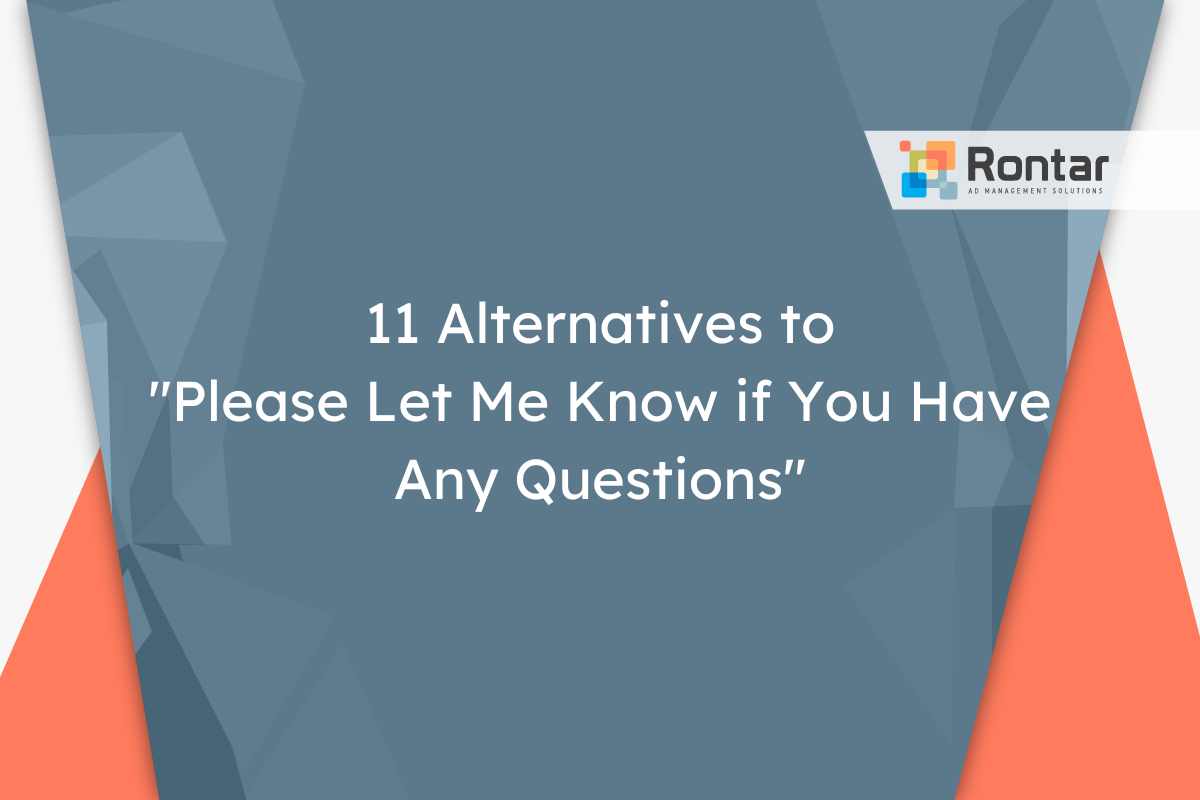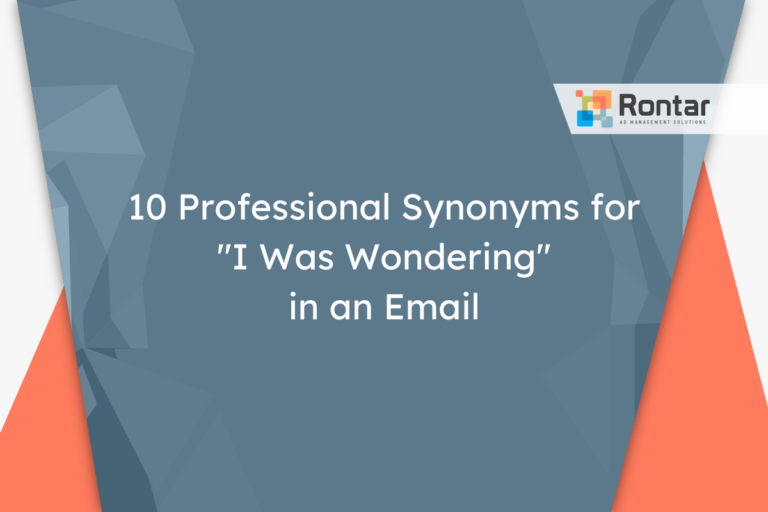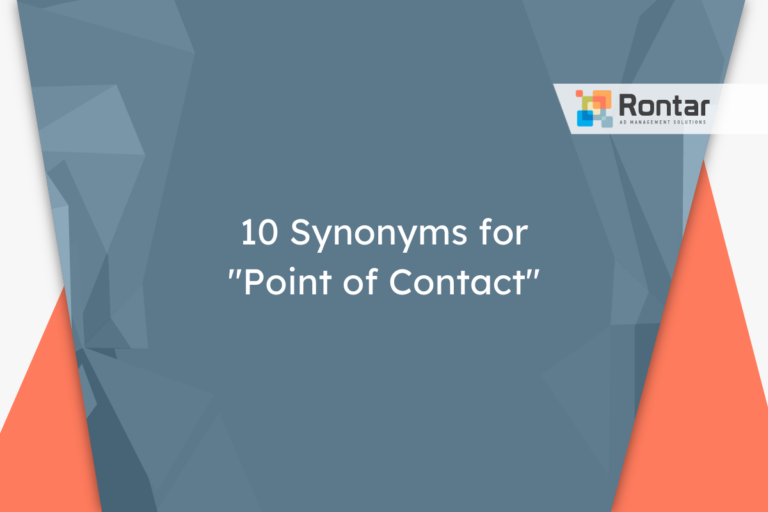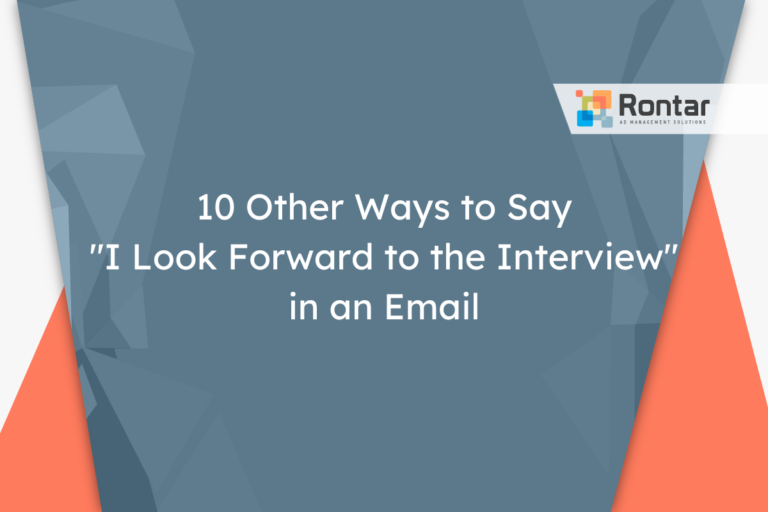11 Alternatives to “Please Let Me Know if You Have Any Questions”

Ending your messages with “Please let me know if you have any questions” is a common way to invite feedback or inquiries. However, using the same phrase over and over can become repetitive and lose its impact.
This article explores 11 different ways to express the same idea, each suited to various situations and levels of formality. By choosing the right alternative, you can keep your communication fresh and effective.
Is It Professional to Say “Please Let Me Know if You Have Any Questions”?
Yes, the phrase “please let me know if you have any questions” is professional, formal or informal depending on the context, and polite. It’s a versatile phrase that suits many situations, especially in the workplace. Using this phrase shows that you are open to further discussion and willing to assist.
This phrase is most suitable in professional settings when you want to encourage your audience or recipients to seek clarification. It works well with colleagues, clients, managers, and even in academic settings with students or professors. As for communication channels, it’s perfect for emails, formal letters, presentations, and even in meetings or workshops.
Here is an example of how to use it in an email:
Hello Alex, I've attached the report on our latest project's progress as requested. Please take a moment to review the details. Please let me know if you have any questions or need further clarification on any of the points covered. Best regards, Emily
Now, let’s look at the pros and cons of using this phrase.
Pros:
- Encourages open communication.
- Shows politeness and willingness to help.
- Applicable in a wide range of professional settings.
Cons:
- Can be overused, losing its impact.
- May appear too formal in casual or familiar settings.
- Does not prompt specific questions or feedback.
Sometimes, people might look for alternatives to this phrase. One reason is to avoid repetition, especially if they communicate with the same individuals frequently. Using synonyms or alternative expressions can also tailor the message’s tone more closely to the intended audience or make the invitation to ask questions seem more genuine and engaging.
11 Other Ways to Say “Please Let Me Know if You Have Any Questions”
Looking for different ways to invite questions or clarifications? Here are some great alternatives:
- Should you have any questions, please let me know
- Feel free to reach out if you have any questions
- Don’t hesitate to ask if you have any questions
- I’m here to answer any questions you may have
- If you require additional details, please ask
- Please ask if anything is unclear
- Should you have any questions, please ask
- If anything is unclear, please ask
- I’m open to any questions you may have
- I’m available for any questions you might have
- Open to any questions
1. Should you have any questions, please let me know
This alternative is similar to the original but adds a conditional beginning, making it feel more formal and polite. It’s a classic way to end messages in professional settings. This version is slightly more formal, making it suitable for emails or documents aimed at clients or senior management. It implies a readiness to help while maintaining a professional tone.
This alternative is best used in formal email communications or professional documents where you wish to maintain a high degree of professionalism. It works well with clients, stakeholders, or higher-ups in a company. Because of its formality, it’s especially good for first-time communications.
Here’s a sample email:
Hello Lauren, Please find attached the quarterly report for your review. Should you have any questions, please let me know. Best regards, James Parker
2. Feel free to reach out if you have any questions
This phrase is more informal and polite, suggesting a friendlier approach. It encourages the recipient to feel comfortable asking questions, fostering a more open and collaborative atmosphere. This phrase is perfect for creating a supportive environment and is particularly effective in emails or messages within teams.
It’s great for use in less formal emails, team communications, or when speaking to colleagues you have a friendly relationship with. This alternative encourages a more relaxed exchange and is suitable for digital platforms like team chat apps or emails among co-workers.
Here’s how you might use it in an email:
Hi Kevin, I've updated the project timeline based on our last meeting. Feel free to reach out if you have any questions. Cheers, Samantha
3. Don’t hesitate to ask if you have any questions
This alternative is both polite and slightly more informal than the original, removing any barrier the recipient might feel about asking questions. It’s a warm invitation that emphasizes the sender’s willingness to help. This message is versatile, fitting both semi-formal and informal contexts.
It works well in emails to colleagues or in situations where you want to emphasize an open-door policy. It’s also suitable for educational settings, such as emails between teachers and students, to encourage questions and interaction.
Example:
Hello Mia, Please see the attached document for the details of the upcoming workshop. Don't hesitate to ask if you have any questions. Warm regards, Nathan
4. I’m here to answer any questions you may have
This phrase conveys a polite and supportive attitude, making it clear that the sender is available to help. It’s a bit more personal and less formal, which can make the recipient feel more at ease. It’s great for fostering a friendly and approachable image.
This version is especially effective in service-oriented communications or when providing support. It’s suitable for customer service emails, mentorship communications, or any scenario where providing reassurance is key.
Here is a sample message:
Hi Olivia, Thank you for subscribing to our service. Attached you will find all the details regarding your subscription. I'm here to answer any questions you may have. Best, Ethan
5. If you require additional details, please ask
This alternative emphasizes the availability of more information, making it both formal and polite. It’s straightforward and directly addresses the possibility that the recipient might need further explanations, making it ideal for detailed reports or proposals.
Perfect for communications with clients or in a technical context where detailed information is shared and further clarification might be necessary. It suits emails, reports, or any professional document that might be dense in content.
Example of use in an email:
Dear Mr. Lee, Please find attached the detailed proposal for the upcoming project. If you require additional details, please ask. Kind regards, Rachel Kim
6. Please ask if anything is unclear
This phrase is straightforward, making it both polite and suitable for most professional settings. It directly invites recipients to seek clarification, indicating the sender’s willingness to provide further information. This makes it perfect for detailed discussions where clarity is crucial.
It’s a good fit for emails, reports, or any form of communication where you’re sharing important details that might need further explanation. This phrase is especially useful in educational or technical contexts, where understanding every detail is key. It works well with students, team members, or clients who are dealing with complex information.
Here’s an example:
Hello Henry, I’ve attached the updated guidelines for the project. Please ask if anything is unclear. Best wishes, Laura
7. Should you have any questions, please ask
This version is very formal and polite, similar to the first alternative but with an emphasis on action. It suggests a respectful distance and formality, making it suitable for communications where you might not have a close relationship with the recipient.
This phrase is ideal for formal emails or documents, particularly in industries like law, finance, or academia, where clarity and formality are appreciated. It works well when addressing clients, colleagues in other departments, or professionals outside your organization.
Example:
Dear Dr. Choi, I hope this email finds you well. I'm writing to inquire about your recent research on climate change. Should you have any questions, please ask. Sincerely, Tom Rivera
8. If anything is unclear, please ask
This alternative is polite and encourages clear communication, making it ideal for when you’re sharing complex or new information. It’s slightly less formal, promoting a friendly atmosphere while still being professional.
Great for emails to colleagues or in educational settings, where you want to ensure everyone understands the material. It’s also good for customer service communications, where clarity and satisfaction are priorities.
Email example:
Hi Team, Starting next month, there will be a new parking policy in place. Please review the attached document for details. If anything is unclear, please ask. Thanks, Janet
9. I’m open to any questions you may have
This phrase is warm and informal, creating a friendly and welcoming tone. It’s polite and shows that you’re not just willing but eager to help. This can make it easier for others to approach you with their questions.
This alternative works well in more relaxed professional settings or team environments. It’s perfect for managers or team leaders who want to encourage open communication within their team. Also great for mentors or coaches.
Here’s how you might use it:
Welcome everyone, I'm excited to have you all here. Remember, I'm here to help you succeed during your internship. I'm open to any questions you may have. Cheers, Mike
10. I’m available for any questions you might have
This phrase suggests a polite and formal yet approachable tone. It’s a bit more personal than some of the other alternatives, indicating that the sender has made time for questions or concerns. This can be particularly reassuring in settings where recipients might hesitate to reach out.
It’s suitable for emails and communications in a variety of professional contexts, from corporate to educational. Whether you’re a supervisor, a project manager, or a teacher, this phrase can help make your recipients feel supported and valued.
An email example:
Hello Team, As we move into phase 2, I want to make sure we're all on the same page. Attached you'll find the project timeline and key milestones. I'm available for any questions you might have. Regards, Sofia
11. Open to any questions
This phrase is the most informal and polite, offering a casual and laid-back way of inviting questions. It suggests a very approachable and relaxed attitude, ideal for internal team communications or less formal settings.
It’s best suited for casual emails, informal team meetings, or communications on internal chat platforms. This alternative is particularly effective in creating a friendly and open atmosphere, encouraging team members to feel comfortable asking questions.
Email example:
Hi everyone, Here's the agenda for this week’s team meeting. Open to any questions. Best, Alex
Final Thoughts
Choosing the right way to invite questions or comments in your messages is important. It can change how people view your emails and can make them feel more comfortable to talk to you.
The 11 alternatives we’ve discussed give you a variety of options, from formal to informal, ensuring you can find the perfect fit for any situation. Using these alternatives will help keep your communication fresh and engaging, making sure your message is always clear and welcoming.






